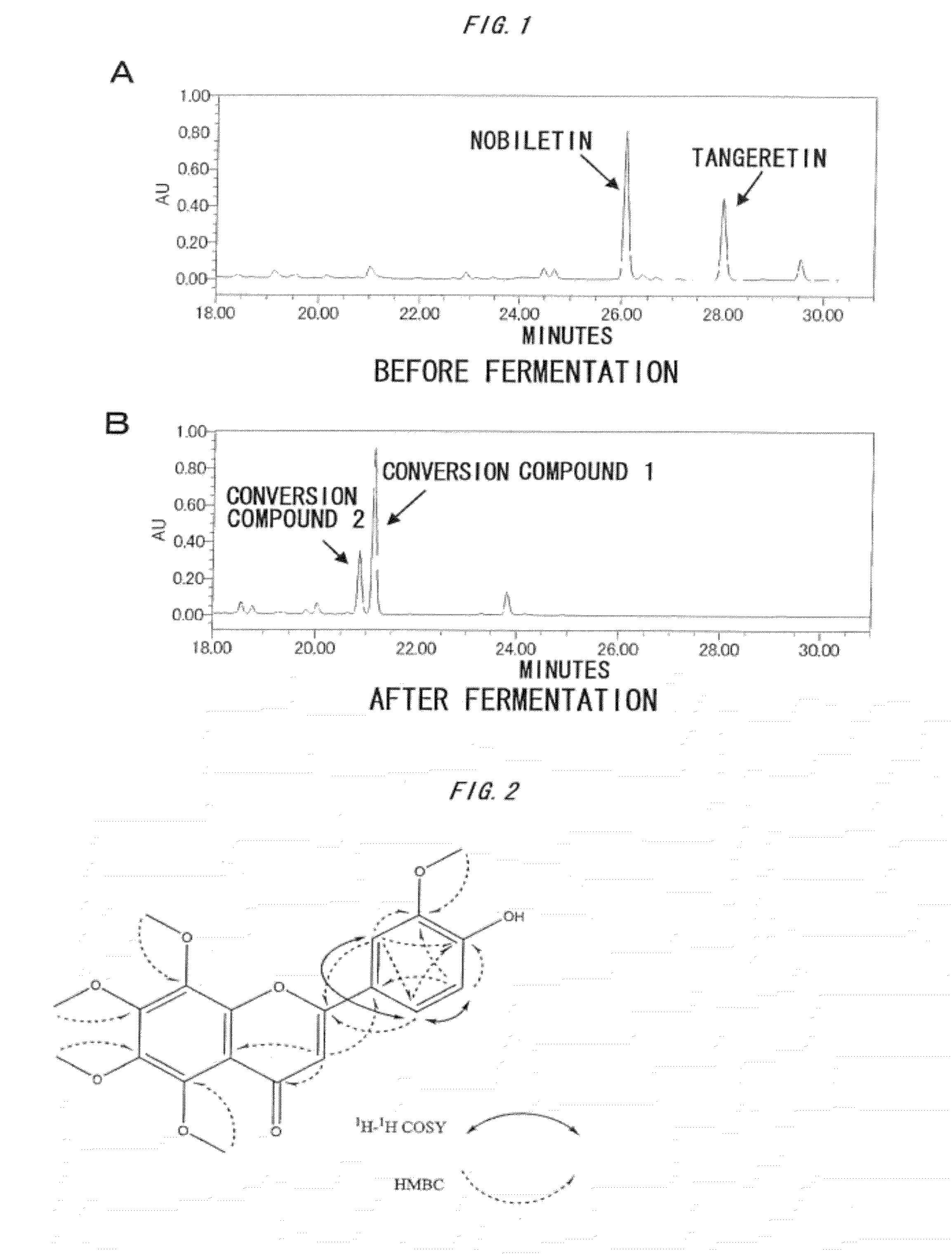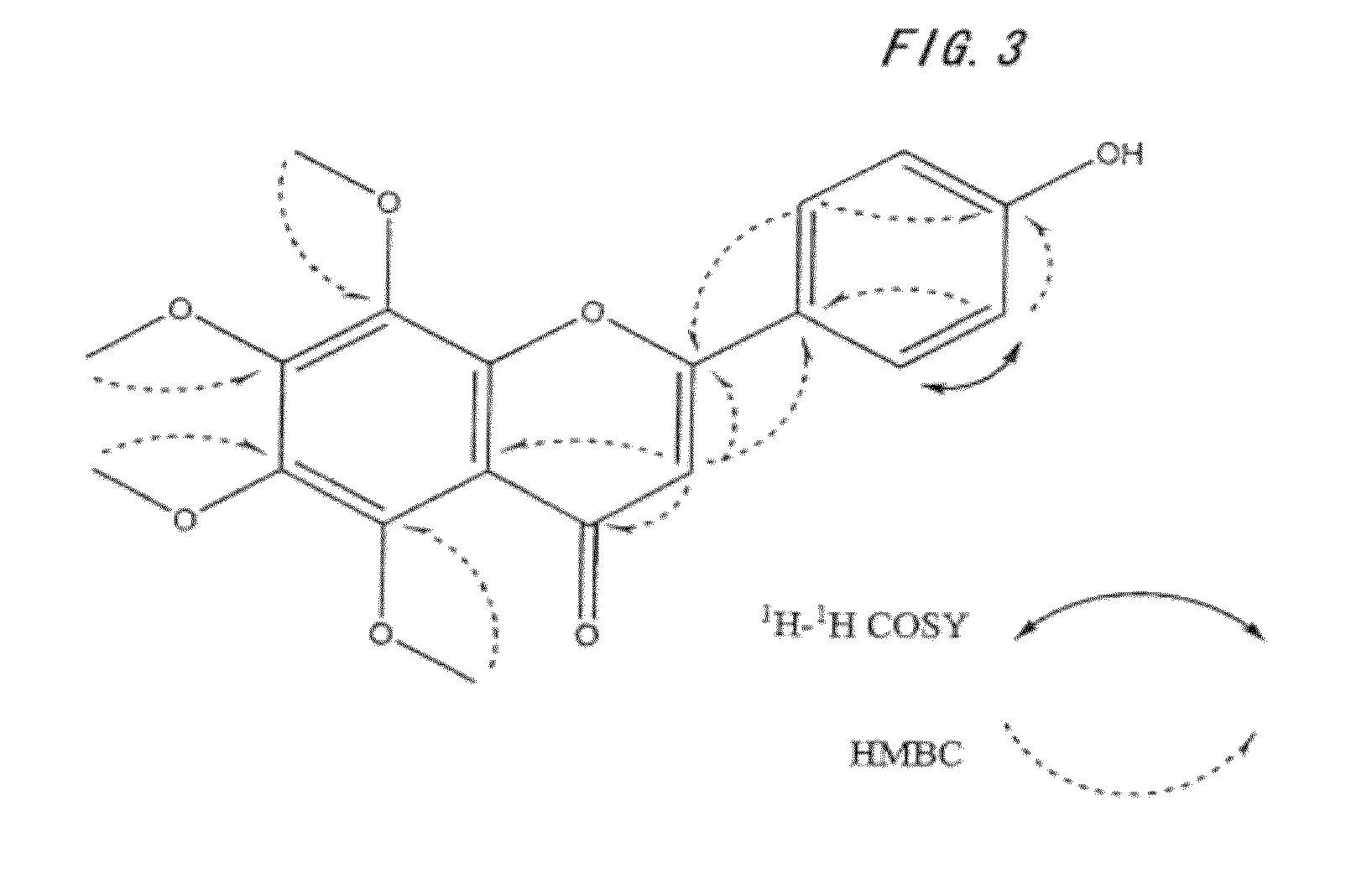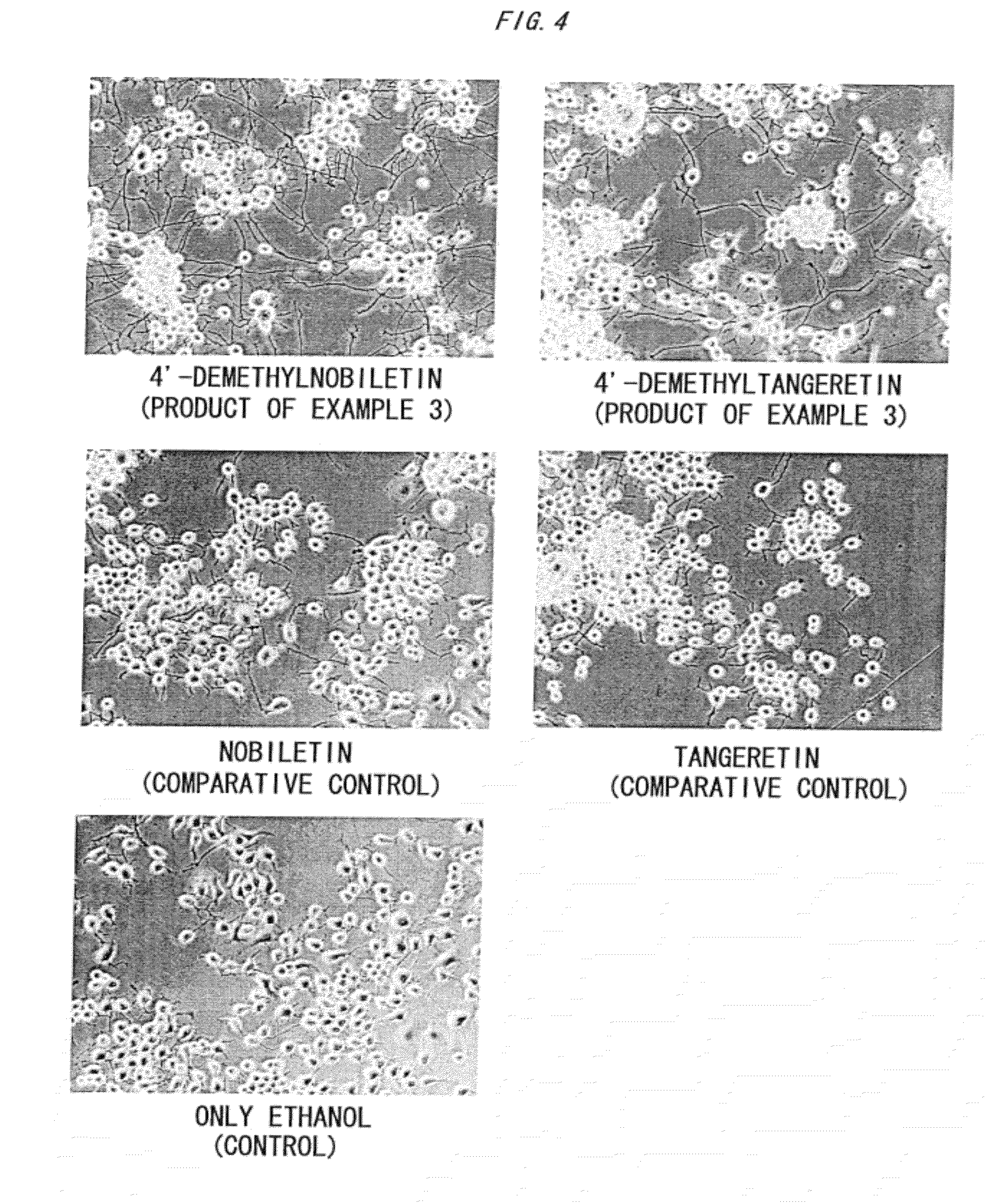Neurite elongation agent, memory-improving agent and Anti-alzheimer agent comprising 4'-demethylnobiletin or 4'-demethyltangeretin as active ingredient, and process for production of the compound
- Summary
- Abstract
- Description
- Claims
- Application Information
AI Technical Summary
Benefits of technology
Problems solved by technology
Method used
Image
Examples
example 1
Fermentation of Fruit Skin of Citrus Reticulata (Another Name: Ponkan) by Aspergillus Mold (Aspergillus Awamori)
[0103]The fruit skin of Citrus reticulata (another name: Ponkan) was used as a raw material for fermentation. 500 g of the fruit skin of Citrus reticulata (another name: Ponkan) were fragmentated by cutting and spread uniformly on a wide-bottom container (a cylindrical container having a bottom) sterilized by an autoclave to achieve good airflow, and a small amount of water was added thereto, followed by heating for 30 minutes.
[0104]Aspergillus awamori (manufactured by Bioc) was inoculated throughout the thus-obtained fruit skin of Citrus reticulata (another name: Ponkan). Then, a microorganism fermentation treatment (fermentation by the Aspergillus mold) was aerobically performed in the dark in a 30° C. incubator for 10 days, to thereby obtain an Aspergillus mold-fermented product.
[0105]Then, HPLC analyses were performed for the fermented product. FIG. 1 show the results....
example 2
Preparation of Composition Containing Demethyl Polymethoxyflavonoid at High Content
[0108]The Aspergillus mold-fermented product obtained in Example 1 above (1 kg) was fragmented by grinding, and 5 L of ethanol were added, followed by extraction at room temperature for 3 days, to thereby obtain an extract liquid.
[0109]Subsequently, the resultant extract liquid was filtrated using filter paper, and the filtrate was concentrated to 1 L using a rotary evaporator. Then, 5 L of water were added, to thereby obtain an aqueous solution.
[0110]The resultant solution was charged to DIAION HP20 (a porous synthetic adsorption resin column) preliminarily equilibrated with water, and unadsorbed components were removed by 3 L of water. Then, components eluted with 2 L of 40% ethanol were removed. Subsequently, components eluted with 2 L of 45% ethanol were obtained.
[0111]Then, the resultant eluted components were concentrated to dryness using an evaporator, to thereby obtain a composition containing...
example 3
Isolation and Purification of Demethyl Polymethoxyflavonoid
[0112]The composition obtained in Example 2 above (2 g) was dissolved in 20% methanol and subjected to ODS column chromatography (a column with an inner diameter of 20 mm and a length of 30 cm was filled with 30 g of Wakogel 50C18). Components eluted with 40% methanol were removed, and components eluted with 60% methanol were obtained.
[0113]Subsequently, the resultant components were subjected to preparative TLC chromatography (silica gel 70 PF254 Plate Wako, film thickness 0.75 mm, manufactured by Wako Pure Chemical Industries, Ltd.) under conditions of a developing solvent hexane / ethanol 7:3, and fractions containing the respective conversion compounds were collected while confirming the compounds with a UV lamp.
[0114]Then, the resultant fractions were each charged to a preparative HPLC column (TSK GEL ODS, manufactured by TOSOH CORPORATION, 4.6 mm×25 cm), and pure polymethoxyflavonoid-conversion compounds 1 and 2 were sep...
PUM
| Property | Measurement | Unit |
|---|---|---|
| Fraction | aaaaa | aaaaa |
| Fraction | aaaaa | aaaaa |
| Fraction | aaaaa | aaaaa |
Abstract
Description
Claims
Application Information
 Login to View More
Login to View More - R&D
- Intellectual Property
- Life Sciences
- Materials
- Tech Scout
- Unparalleled Data Quality
- Higher Quality Content
- 60% Fewer Hallucinations
Browse by: Latest US Patents, China's latest patents, Technical Efficacy Thesaurus, Application Domain, Technology Topic, Popular Technical Reports.
© 2025 PatSnap. All rights reserved.Legal|Privacy policy|Modern Slavery Act Transparency Statement|Sitemap|About US| Contact US: help@patsnap.com



